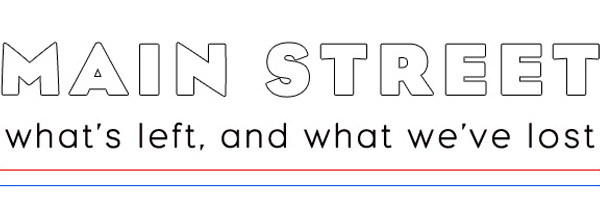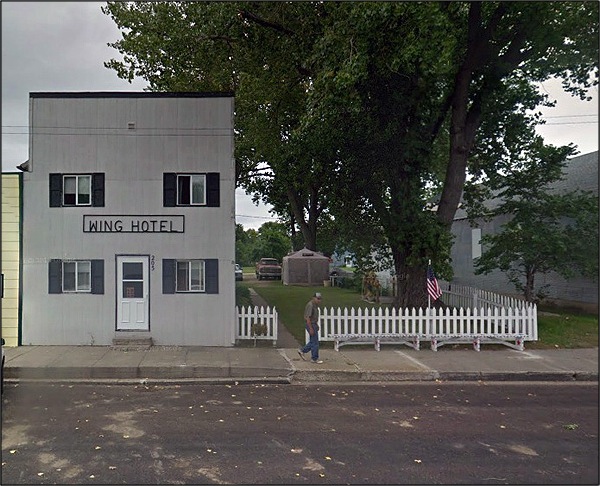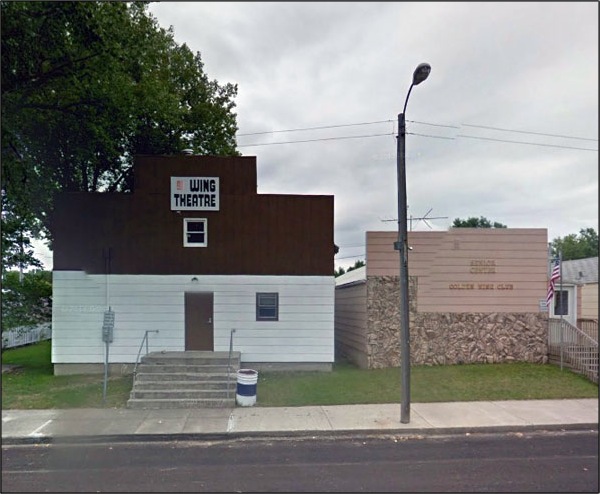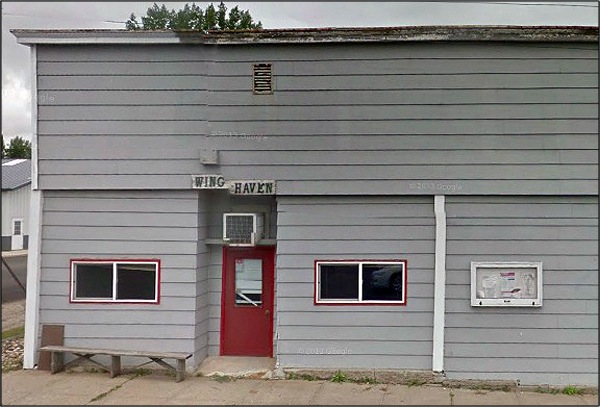|
Went to the Auto Show today to shoot a video for the paper. It’s so much fun. No script, no plan, just drop in and walk around, see something, think: this! Then Shari sets up the sticks and attaches the camera and we count it down, and something happens. You have to keep the entire shoot in your head, where you’re going and what you did, so your remarks transition to something you haven’t shot, or shot before. The best part was riding the course at Camp Jeep, where the trucks go up steep hills and rumble over Rugged Terrain and lean over without toppling.
Maybe two cars appealed to me. Three if you count the classic black ’63 Dodge that looked like something the Secret Service would use to drive Kennedy’s mistresses to the hotel. (They could take the cab back home.) I liked the MiniCooper for the first time in my life, mainly because it was turquoise, but hated the dash and realized it would be the stupidest car for a snowy climate one could choose. Everything else was boring. I know, I know, I’m a guy who drives an Element, but it’s distinctive. Nothing like my old Eclipse. I’d buy that car again in a second.
The video will be up at startribune.com today at some point. We did it quickly and I didn’t talk to any reps about the latest vehicles and their marvelous attributes, because that stuff is video death. One of the cars was all-enabled, and featured Bing searches from the dashboard. Bing. The Wankel of search engines.
Typical Wednesday; the Column looms over everything. What will it be? I had an idea in hand by 8 PM, so when I picked up daughter from Confirmation she said “sooo. . . . ?” And I pretended I hadn’t said we might go somewhere afterwards. “Soooo what?”
“Sooo. . . . we could go somewhere?”
“Other than Starbucks, you mean?”
“Yesssss.”
Got our drinks and sat by the window and watched the world go by and talked about school. She believes that most of what she is taught she will forget. Math especially. I made the point for learning to understand math, which is the important part. It’s a language. Even if you only know “yes” and “no” and “where is the bathroom” and have an idea how the accent sounds, it matters.
“I wish they taught us practical things we could use later in life.”
“Uh huh. If only you lived with two adults who could share their insights on those topics.”
Eyeroll, but I had her there and she knew it.
I said I sat in a MiniCooper and liked it.
“Noooo.” What? “They’re stupid.”
Explanation: silly little show-off things for hipster parents. Sigh. I didn’t mention how it just reminded me of a Vespa, with classic 50s European styling. Because then she’d beg me not to get a scooter.
I have decided to get one, knowing full well I’ll look like a dork, and expect someone to drive alongside and shout “desperate cliche right down to the Chuck Taylors, aren’t you?” But I am tired of things being the way they always were, and I want to spend the summer producing a series of short little videos for the paper in which I use a GoPro to go hither and yon. Things this year are not going to be the way they were before. Already they’re not. This is an even year. These are the good ones.
Thursday morning I’m going to have a chat with a Senator from North Dakota, and I hope to ask him what can be done for rural NoDak towns not touched by the oil boom. Or, to put it another way, “most of them.” There will always be these little hamlets hanging on the county roads, offering one thing the other doesn’t, serving the farmers who need something and don’t want to drive to the throbbing metropolis 45 minutes down the road. But no one’s moving in and those who are there are moving on, which is to say, expiring. Every few years another house goes dark as Mrs. Elmer Johnson relinquishes her mortal coil. The kids come back from wherever they’ve gone and clean out the place, sighing over all the stuff she saved - honestly, Ma, 25 plastic Sioux Bee honey containers? - and smiling through gentle pain at the box that contained a few memories of their childhood. Not their memories, but Mom’s. They put the place up for sale, but who’d buy?
You can imagine they’d stand outside the garage, looking at all the stuff that Dad left, peering int the oily gloom, and just think: leave it.
When I have the chance to drive through these towns I wonder how many houses are like that. Sometimes the lawn has a pinwheel, a sign of life - but the hand that drove it into the dirt could have stopped a year or two ago. The blades still turn. The wind always blows out here.
The standard take on the necessity of small towns: they populate larger cities with kids who’ve been raised on small-town values. True. As long as they keep making replacement kids. I suppose that works, but there’s also something astonishing about these outposts of civilization - big-town virtues imported far away to the wilds, where rules and order are imposed on an unpopulated and indifferent land. Where the architecture nods to Europe in its own trim way; where the streets are straight, the windows have signs for products you could get in New York or Chicago stores, where a fellow can pull up his car to let it cool off and walk a Coke out of the cabinet fridge and it’s the same Coke he had four hundred miles back in the train station. The people who live there like it. The town is tidy and well-provisioned. It has its petty people, its scandal, its solid citizens and hypocrites, a pastor who lives down the block from the School Principal on the nice street with the tall elms.
Some people wouldn’t want to live someplace where everyone knows everyone else; some people wouldn’t want it any other way. Because tornados come. Crops fail. Hail strikes. You need everyone and if you’re going to need them you’d best do them the courtesy of knowing them as well - if only to raise an index finger from your steering wheel as you pass on Main.
There’s no getting these places back. They will perish and the prairie will take back what it can. They rose and fell in a hundred and fifty years, a breath drawn in and a breath let out. Not a bad run, really.
If only each could be documented before they go.
Wait a minute: they have. More after the break.


Usually we have a bank, a post office, a restored office building, a ghost sign, and other fixtures of old downtowns. Well, I don't think we'll have that today. We're going to small town North Dakota.
Tuttle.



Cover up the old plate-glass store window with shingles. In this case it makes the lower floor look like a barn owl with a black eye.
The town has 80 people, and a website. It says:
Tuttle was founded in 1911 by Colonel William P. Tuttle, an official with the Dakota Land & Town site Company. Col. Tuttle took great pride in the town that was his namesake. He even donated to the Tuttle Baseball Club for the purchase of their first baseball uniforms.
Awfully big of Lord Tuttle. The Google cameras have been through twice; the first time a store front had nothing on it, but the second pass yileded this: A view of Tuttle at its downtown peak, I presume.



There's pride in that picture: here's what once we were. Today:



Fire, time, the wrecking ball: it's like looking at a shelf where the bookends remained the the volumes were lost. I don't know about you, but I find these things terribly sad. Not because these towns
Monday I had some shots of the building in the distance; that's the old school. Old photos have been collected here, where you can chart the contraction of the towns by the dwindling size of the classes. In the end there were not enough children. The town's Wikipedia entry notes that 2007 was a hard year for Tuttle:
In this year, the Tuttle School closed. The Danielson Hotel, an abandoned hotel landmark on Tuttle's main street, was demolished. On November 19, 2007, the Tuttle post office building, a historic field stone structure created in 1938 as a WPA project, was significantly damaged after a furnace ignited and fire gutted the building. The resulting smoke plume was visible for many miles. Although the fieldstone walls still stand, the future of this building is in doubt.
It's gone now. Darrenleno's photostream has a picture: As WPA buildings go, this isn't exactly Streamline Moderne.


From the same page, that abandoned hotel landmark:


I don't know how you can live around things like this and see things fall and burn and not find yourself filled with the occasional stab of ventricle-stopping despair.
Well, there's always the consolations of Bud. The building on the corner appears to be a bar - with a TV antennae on the roof. Wonder how many stations they pull in.



Across the street:



The VFW Post. All the buildings seem to have the huddled mood of a sick bird. Was not always so: Residents have assembled some old pictures here adn the 1954 shot makes you smile. They had a Kelvinator dealership!
If you want a bigger town, you'll have to head down the road to Wing, pop. 154.





The theater dates from the 40s, and still runs on the weekend. Next door is the Golden Wing Senior Center.
For your hairstyling needs:



Have a drink or perhaps a Tombstone pizza at the Haven:



I suspect these buildings once had more . . . friendly faces, but like so many small towns, they seemed to board themselves up in advance of closing for good.
If Wing and Tuttle seem to small, you can go south to Steele, pop. 715, where the downtown -


- is much the same. Again: these windows are too big! Board 'em up and stick in something you'd usually find in a bathroom. Why? A reaction to high heating costs in the 70s? A storm blew them out and it just cost too damn much to replace them?
Around the corner, one of the most nexplicable "renovations." It's the details on the cornice I like; they didn't have a lot of money for fancy terracotta, but if you have enough bricks you can make do. But the rest is a sad mess.



The right side of the courthouse loks as if it's been gagged:



Finally, this. A ghost sign. Not even that ghostly.



And therein hangs a tale. Close-up reveals "Bridgeman-Russell" on the swash. Minnesotans might sit up at that; Bridgeman's was a chain of ice-cream parlors popular in the latter part of the 20th century. Same name? Yes and no. Henry Bridgeman and Newell Russell ran a dairy in Duluth - a long, long way from Steele - and sold ice cream, among other things. I had no idea their reach extended this far.
The sons of Bridgeman struck out on their own with ice-cream parlors in 1936. The Bridgeman site says: "Their adventure was met with disbelief. Why would anyone open an ice cream shoppe in Minnesota? What about the Depression?" Well, Pa had run the largest dairy concern in the Midwest, so I assume they were sufficiently capitalized, and I doubt anyone said "ice cream? In Minnesota? What madness!" People opened stores during the Depression, you know. It's not as if economic activity ceased altogether."
Most of the Bridgeman's restaurants have closd, at least around here. The ice cream is still available. The sign, a bygone reminder of the far reach of a refrigerated treat, remains - waiting for another half century of wind and rain to scour it off.
Unless fire takes it first.

|